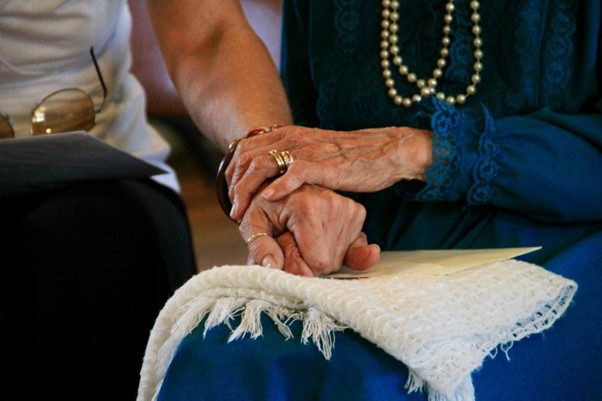Technology can be transformative – consider how the mobile phone changed how we communicate with friends and family, or how videoconferencing has created a whole new realm of hybrid working opportunities.
For nursing, a highly respected and sought-after profession, how will developments in new and emerging technologies such as artificial intelligence (AI) change how they operate? As the United States continues to experience a change in demographics, as nursing needs, how will new and experienced nurse practitioners, such as AGNP-C qualified practitioners, harness these new technologies to improve the quality of life of their patients?
As we’ll soon discover, AI presents a unique array of opportunities for nursing practitioners of all fields – although there are risks that even the most seasoned professional must be aware of.
Nursing – A Transforming Profession
Nursing is facing an inflection point in how care is currently offered. The United States is one of many nations experiencing a change in demography – over the past fifteen years, experiencing a decline in the birth rate of more than 20%. This, combined with enhancements in medical treatments and improvements to healthcare more broadly, has resulted in a world where Americans are living longer than ever before, but are having fewer children – resulting in population growth that is largely driven by immigration.
This transformation in demographics will require a rethink of the skills and capabilities required for nurses to succeed in the decades ahead. Research conducted by the Urban Institute, a leading think-tank, found that by 2040, the number of Americans aged 65 or more was expected to double by the end of the next decade.
This change will undoubtedly result in a greater need for nursing practitioners who are qualified to work with a range of different age groups, across nursing specializations such as gerontology, as well as facilitators who are capable of working across a flexible range of age groups.
Balancing Act – Managing Nursing Capacity
More and more nurses will be needed to address skills shortages in the decades ahead, that much is clear. The Health Resources and Services Administration projecting significant shortfalls in many nursing specializations for at least the next decade, a figure that many departments agree with.
It will be imperative for hospital administrators to identify ways that they can reallocate manual tasks, such as paperwork, away from practitioners, so they can spend time working on more complex patient issues. For many administrators, it will be important to understand the benefits and challenges of using AI to automate and simplify roles – as well as the legal obligations of record holders under data protection acts such as the HIPAA Act.
Using AI To Manage Patient Records
One such area of nursing that could be supported through the use of AI is the management of patient records. Research conducted on the time that nurses spend on care, administration, and other activities, presented at the American Medical Informatics Association’s Annual Symposium, found that qualified nurses spend approximately 25% of their working day completing administrative tasks, such as intake paperwork.
The research notes that a reduction in time spent on administration paperwork could lead to an improvement in the quality of care that patients receive, highlighting how assistance in documentation may help drive better outcomes. Could patient records be simplified through the use of AI?
Take, for example, a patient who is connected to an array of devices – perhaps they’re connected to a heart rate monitor, regularly being checked on by a nurse, who’s documenting key clinical markers for several hours. While this activity would be time-consuming for a nurse, it’s not an infeasible role for an AI assistant – with nearly a dozen such products being tested in hospitals nationwide, it appears that these may emerge as a new assistive tool for nurses.

A New Realm of Patient Care – AI Personalization
While America ages, conditions that affect older Americans, such as Alzheimer’s disease and dementia, will continue to become more prevalent in the community. These conditions often have complex care needs – patients may need to go into assisted living and require specialized assistance to get through the day.
In a world where there may not be enough staff available to support patients, the development of virtual AI assistants could provide a new avenue for care for elderly patients. Assistants such as Viv, an AI companion designed to support dementia patients who may not have companionship in aged care facilities, are being trialed in Australia and could provide an opportunity to provide personalized support for patients, without making the role of a nurse practitioner overbearing.
It’s clear that in the decades ahead, America’s nursing sector will have to transform to meet the needs of an aging population. As subtle as these changes may be to patients, understanding how they will impact nursing staff and administrators will be vital to making the most out of these new and innovative technologies.
Did you find this helpful? Check out our other helpful articles on our website.
Read Also
- The Benefits of Contract Labor Staffing in HealthcareThe most successful healthcare facilities today aren’t just reacting to crises—they are building workforce resilience to withstand them. Unpredictable patient demand, coupled with persistent nursing shortages, has made the traditional staffing model obsolete. Relying on mandatory overtime to cover a sudden surge in capacity is a recipe for high turnover and rising employee burnout relief… Read more: The Benefits of Contract Labor Staffing in Healthcare
- Management Reinforcement for Healthcare Providers in a Shifting SystemHealthcare is changing faster than ever. So, providers are feeling the pressure to keep up. New technology, changing patient needs, and constant rule updates make it tough for managers to stay on top. Strong leadership helps teams work better, give great care, and stay happy in their jobs. Here’s how healthcare leaders can strengthen their… Read more: Management Reinforcement for Healthcare Providers in a Shifting System
- Why Effective Disinfection Remains the Foundation of Public HealthFrom hospitals and schools to transport hubs and food production sites, disinfection is central to breaking the chain of infection and protecting community health. The COVID-19 pandemic highlighted how crucial surface hygiene and environmental control are in reducing the spread of harmful microorganisms. Yet, beyond emergency response, routine and validated disinfection practices remain the cornerstone… Read more: Why Effective Disinfection Remains the Foundation of Public Health
- How to Navigate Your Medical Assistant Career PathBecoming a medical assistant can feel both exciting and a little stressful. This job lets you work closely with doctors and other healthcare workers to help patients. But with so many different paths to take, it can be hard to know where to start or how to plan your career. Wouldn’t it be nice to… Read more: How to Navigate Your Medical Assistant Career Path
- Benefits of Enrolling in Botox Training CoursesMany people want to enhance their skills in the beauty field, and one way to do that is through Botox training. With the rising popularity of Botox, enrolling in training courses can set you on a path to a rewarding career. If you are considering this option, you might be curious about the benefits that… Read more: Benefits of Enrolling in Botox Training Courses
- How Pilates Certification Enhances Professional Growth in HealthcareAre you looking for a way to expand your skills and stand out in healthcare? Pilates certification can be a powerful step in your professional journey. It not only helps you understand movement and body mechanics. It also gives you tools to support patient recovery. It also improves mobility, and promotes wellness. Ready to see… Read more: How Pilates Certification Enhances Professional Growth in Healthcare
- Understanding the Legality & Challenges in the Dental Aligner IndustryThe dental aligner industry has grown quickly in the past decade. More people are choosing clear aligners instead of traditional braces because they are less noticeable and often more convenient. While this growth has created new opportunities, it has also raised legal questions and practical challenges. Patients, dentists, and companies are still learning how to… Read more: Understanding the Legality & Challenges in the Dental Aligner Industry
- CPR Skills: Be Ready to Act When It Matters MostEvery year, many emergencies happen where lives are at risk and quick action is needed. One skill that can make a big difference is knowing CPR (cardiopulmonary resuscitation) and first aid. In these moments, knowing what to do can be the difference between life and death. By learning these skills, you protect yourself and become… Read more: CPR Skills: Be Ready to Act When It Matters Most









